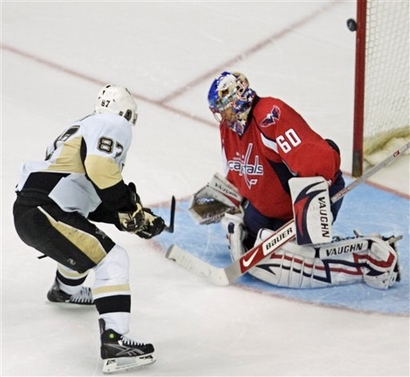Earlier this week, Baseball Prospectus introduced a new metric called Deserved Run Average. DRA is a new and improved version of measuring pitcher performance. The old standard of ERA has not been truly relevant since it unfairly penalizes or credits pitchers for what the fielders behind them do. From there, FIP was born, which tried to filter out all that fielding nonsense. It was an improvement, but it might have gone too far. FIP has long been overly harsh on Jered Weaver and far too generous to the like of Joe Blanton.
The hope is that DRA can improve upon FIP, smoothing out some of the irregularities and bake in a whole lot more context. Whether or not it will do that remains to be seen. No stat is perfect, so it will probably only be a matter of time before the warts of DRA become visible. We just need to live with it a bit first.
A good place to start is just taking a look at the current Angel rotation members. Really, they are a great case study. Jered Weaver and Hector Santiago have both had ERAs that outperformed their FIP by huge amounts throughout their careers. DRA seems to be far more locked into Weaver’s unique ability to generate outs via pop-ups, rather than penalizing him for not inducing grounders like FIP does. In 2013, Weaver’s ERA was actually 0.17 runs higher than his DRA but was 0.58 lower than his FIP. In 2014, it was more of the normal pattern we see with Weaver. He had a 3.59 ERA, but his DRA was 4.10. Why the difference? Looking at the components of DRA, it appears that Weaver really took it on the chin for his inability to control the running game, which is not something we think about a lot, but it is definitely a big part of the game.
Santiago is a strange case as well. He had ERAs of 3.59 and 3.75 in 2013 and 2014, respectively. His FIP in those years was 4.47 and 4.31, respectively. He was a historical overachiever, or lucky depending on what you think of his talent level. DRA seems to have settled the debate quite handily by slapping him with DRAs of 4.29 and 4.89 the last two years. For anyone who watched him pitch in 2014, that certainly feels a lot closer to what he actually did on the mound. He just allowed so many baserunners. He managed to avoid having them score as often as we’d expect, but DRA doesn’t seem to think that was a skill so much as luck or getting bailed out by his defense and bullpen. One of the features of DRA is it also penalizes starters who get pulled early. Basically, if the manager doesn’t think you’re pitching well enough to get out of the sixth inning, DRA infers that to mean that you aren’t pitching well. So, all those five innings-and-done starts from Hector last year really came back to haunt him here.
The other great case studies from the Angels are Garrett Richards and Matt Shoemaker, both of whom are coming off breakout years. Perhaps DRA can shed some light on whether or not those breakouts are real. For Shoemaker, the results are a bit discouraging as he had a 3.81 DRA last year. That’s a far cry from the 3.04 ERA he posted. That’s a shame because his 3.29 FIP was a big reason people cited for believing in his breakout. He still rates as a solid pitcher, but DRA doesn’t buy him as a legit frontline starter.
Garrett Richards, however, is an entirely different story. As good as Garrett was last year, 2.61 ERA and 2.63 FIP, DRA thought he was even better at 2.43. And that is with Richards having a poor component rating for controlling the running game, so on a pure pitching level, Richards is truly terrific in the eyes of DRA. It even had a premonition that Richards was on his way to being better when his DRA in 2013 was 0.29 better than his ERA.
The final Angel I wanted to look at was Huston Street. He’s been quite anomaly the last few years because he has posted microscopic ERAs while carrying preposterously high strand rates and wildly disparate FIPs. For example, in 2013, Street had a FIP over two runs higher than his ERA. DRA sided with the FIP as it was almost a run and a half higher than the ERA. In 2014, Street had a 1.37 ERA but a 2.79 FIP. There’s no question that Street was good, but is he truly the dominant pitcher his ERA suggests? DRA says no with a 2.60 rating, so he’s just pretty good. That seems like the kind of thing that the Angels might want to remember when it comes to contract talks.
In summary, go and get yourself a Baseball Prospectus subscription. I don’t think you actually need one to look at the stats, but you should get one anyway. After that, spend a little time surfing through the new different little components. I know I’m going to carve out some time to look into Angel rotations of the past. First I need to muster up the courage to face the reality that early-2000s Jarrod Washburn may not have actually been the indomitable force that my younger more naive self thought him to be.
Add The Sports Daily to your Google News Feed!
